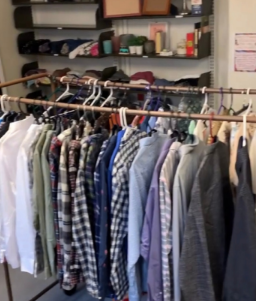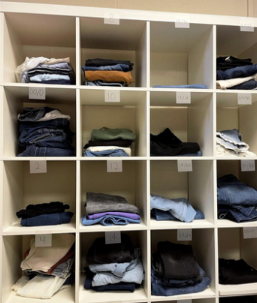By: Jacqueline Kenney
3 Ways to Sustainably Discard Clothing

On average, the US alone has been noted to discard upwards of 34 billions of pounds of textile waste each year (Lundberg and Devoy, 2022). That is around 100 pounds of waste per person each year! Think of it this way, how many times do you think you wear an item of clothing before getting rid/sick of it and inevitably discarding it? If your answer is around 10 times you are correct. On average the number of times a person wears a certain clothing item is around 7-10 times before discarding it, which is not a lot (Igini, 2023). This number has currently declined in the past 15 years but 35% and people are becoming less likely to wear clothing items more before discarding them (Igini, 2023). But why is this? The simple answer to this question is: fast fashion and the decline in quality of the product. The question then arises: how does clothing waste affect the environment?
3 Sustainable Ways to Donate Unwanted Clothes
1.Clothing Stores Recycle Option: The brand Madewell, which is known for its buisness casual clothing and jeans, offers you to bring in any brand of jean and trade them in-store for a $20 credit towards a pair of their jeans. By doing this Madewell has recycled over 900,000 pairs of jeans and saved around 415 tons of landfill waste (Roadrunner 2021). This marketing has given its customers an incentive to discard unwanted clothing in a store that will epicycle the product that get donated.
2. Local Textile Reuse/Recovery Initiatives: In many US cities, new initiatives pop up revolving around ways to make the city more sustainable and ‘greener’. In DC, they have come up with ReThread DC which provides local residents and visitors with resources for decreasing the impact of their clothing on the environment (DOEE, 2023). ReThread offers events where people can bring their damaged clothing to be fixed to eliminate discarding them, pop-ups where they can donate clothes to be sent to various religious
communities and lower-income housing and much more (DOEE, 2023).
3. Local Thrift Stores: Thrift store options offer support to those individuals and families who are struggling financially by offering affordable clothing options without sacrificing the quality or selection of items (Koldham, 2024).Once you donate your clothes you will receive a small commission back on the items that the store sells. Not only does that help the buyer by purchasing more affordable clothing, but it also helps the seller and store as shoppers take a more sustainable approach to shopping and putting their money towards small businesses rather than large market sellers (Koldham, 2023).
Environmental Effect From Clothing Waste
Around 66% of your discarded clothes are sent into landfills in the US where they are left to decompose (Lundberg and Devoy, 2022). This process may take a few years to an upwards of over 100 years (Lundberg and Devoy, 2022). The next 15% of clothes are then recycled and the remainder are shipped abroad to various countries and put into their landfills (Lundberg and Devoy, 2022). The clothes that are sent abroad are sent to countries with less advanced waste systems which produce immense environmental and health effects to these vulnerable populations. In Ghana for example, these landfills produce gasses and chemicals that pollute the air, soil and groundwater which leads to water-borne diseases, clogged gutters which produce flooding and the burning of these landfills cause respiratory and cardiovascular health complications (Lundberg and Devoy, 2022). Along with discarded clothes, there was around 16 million tonnes of CO2 emissions created by online returns in the US in 2020 and around 2.6 million tonnes of the returned clothes ended up in landfills anyways. For most companies it is cheaper to throw away the clothes than to return the returned clothes back into the brands circulation. So even by returning unwanted clothes instead of discarding them, they are put in the landfill pile anyways (Igini, 2023)! Some donation sites such as Salvation Army, Savers, Goodwill and more still send some of your own donations to these landfills in Ghana and other countries due to the mass amount they receive (Lundberg and Devoy, 2022). So if I can't donate my clothes to these donation sites, where else can I donate my unwanted clothes?

Cardinal Closet: At Catholic University, located in Gibbons Hall, there is an on campus thrift store (Cardinal Closet) where students are open to shop the selection of donated clothing. It is based on an exchange model, meaning you bring in an item of clothing to swap for another (Plunkett, 2022). This space offers students an option to find various types of clothing, but more importantly business casual clothing (Plunkett, 2022). Most college students are in the market for business casual clothing that can be worn for networking events, presentations, and interviews and Cardinal Closet provides a space for them to find those pieces. They offer various donation boxes throughout the year both in the dorms and also in busy spaces on campus where students can donate their clothes there rather than throw them away (Plunkett, 2022). They offer students a more sustainable and cost effective way of shopping (Plunkett, 2022).
